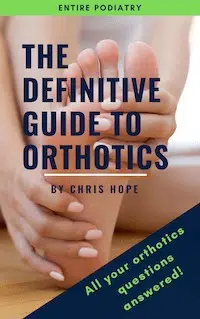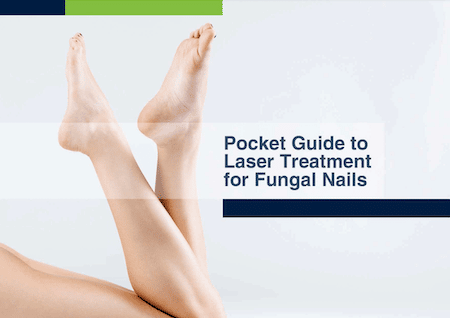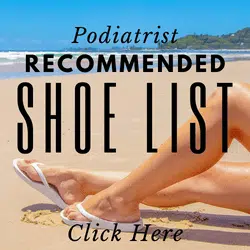Pain felt at the back of your heel is a common complaint that affects both active and inactive people of all ages. There are a few different causes of pain in this location.
This page will focus on back of heel pain in adults. If your child is suffering from pain at the back of their heel, click the link here for more detailed information about ‘Sever’s Disease’ which is the most common cause of heel pain in children.
The Achilles tendon is the strong cord of tissue that you can feel at the back of the ankle. It attaches the calf muscles to the heel bone and is responsible for moving our ankle and is constantly working when we stand, walk or run. The Achilles tendon is the strongest tendon in the body. Yet despite this strength, the tendon and it’s surrounding structures are still prone to injury due to the large forces it must withstand.
The Achilles tendon attaches to the back of the heel bone, called the calcaneus. We also have two bursas at the back of the heel. These are fluid-filled sacks that lubricate and protect the tendon and the ankle joint.
There is a fair bit of anatomy here and these structures are all closely related in location and function. This is why it is very possible for more than one structure to be affected causing posterior heel pain.
The most common causes of pain at the back heel include the following:
- Retrocalcaneal bursitis
- Insertional Achilles tendonitis or tendinosis
- Achilles Insertional Calcific Tendinosis (AICS)
- Haglund’s deformity AKA Posterior Calcaneal Exostosis
Treatment for each of these conditions overlap, but it is still important to understand exactly which condition you have in order to correctly guide treatment.
How do I know what’s causing my posterior heel pain?
In order to reach a diagnosis, your podiatrist will take a thorough history and assessment. This will involve looking for any swelling or redness, possible thickening of the tendon, locating the area of most pain, assessing any tightness or restriction in motion and so on.
The podiatrist will also look at your stance, gait (your walk) and footwear. They may also wish to order radiographic imaging such as an x-ray and an ultrasound. An X-ray and an ultrasound look at the quality and the health of the structures at the back of the heel. It will determine the size, health and composition of the Achilles tendon and will confirm or rule out the presence of any tears, bony spurs, bursitis or calcification.
Retrocalcaneal Bursitis
What is Retrocalcaneal Bursitis?
Bursitis occurs when a bursal sac or a ‘bursa’ is inflamed, causing it to be painful and to increase in size. Bursas are located throughout the body. They are fluid filled sacs that help to lubricate and reduce friction between two surfaces in the body, usually muscles and tendons as they glide over bony prominences.
We have two bursas at the back of the heel. One sits deep to the Achilles tendon called the ‘retrocalcaneal bursa’ and this protects the Achilles tendon from irritation against the heel bone. We also have a more superficial bursa called the subcutaneous calcaneal bursa which is located closer to the skin in front of the Achilles tendon.
Either of these bursas can become inflamed and develop into a bursitis.
What are the symptoms and causes of Retrocalcaneal Bursitis?
Retrocalcaneal bursitis symptoms will usually be pain and swelling felt at the back of the heel. The back of the heel may be tender to touch and there can be pain with movement of the ankle joint or pain with pressure from footwear at the heel. It can present in a very similar manner to Achilles tendinopathy.
Calcaneal bursitis usually develops from overuse and is more likely to occur in those with tight calf muscles or people who frequently wear high-heeled shoes. Tightness in the calf increases the pull of the Achilles tendon on the calcaneus and this tight pull can aggravate and inflame the bursa.
Bursitis are also more likely to develop in those with inflammatory pathologies such as rheumatoid arthritis or seronegative spondyloarthropathies.
How to treat Retrocalcaneal Bursitis?
Treatment will begin with conservative measures and these are very often successful.
Non-surgical treatment goals at Entire Podiatry
Some of our non-invasive treatments options for calcaneal bursitis pain include:
- Heel Lift or Shoe with a Moderate Heel: A slightly elevated heel will reduce the pull of the Achilles tendon on the heel bone. This can reduce the amount that the tendon is ‘squeezing’ on the underlying bursitis. This can provide relief and enable the enlarged bursa to reduce to a smaller, more manageable size.
If it is not feasible to wear a shoe with a moderate heel then Entire Podiatry can supply ‘heel lifts’ which can be worn inside the shoe to lift and support the heel. - Custom foot orthotics: A foot which has biomechanical faults such as excessive pronation or under pronation can contribute to the development of the bursitis and can slow its resolution. A pair of retrocalcaneal bursitis orthotics will be designed in such a way to improve the foot posture and function to reduce compressive forces at the posterior heel.
- Anti-inflammatory Measures: To reduce the inflammation of the bursitis topical or oral anti-inflammatory medications are often useful. These medications may not be suitable for everyone, which is why it is important to discuss this with your practitioner first. Icing can be a very useful way to manage the pain and reduce the inflammation.
- Retrocalcaneal bursitis exercises: Calf stretching: Stretching and loosening tight calf muscles is useful in treating calcaneal bursitis. A looser calf muscle will reduce the pull and strain of the Achilles tendon on the heel bone which frees the bursitis under the tendon. Your podiatrist can give you specific exercises to loosen the calves. Your podiatrist may also perform a ‘muscle release’ or a deep tissue massage to release tight muscles.
If there is minimal improvement with these conservative measures, you may benefit from aspiration of the bursa. A medical specialist will use a syringe to drain the fluid from the bursa. A retrocalcaneal bursitis injection of a corticosteroid may also be administered to relive the symptoms. In very rare cases, if all of the above measures fail then retrocalcaneal bursitis surgery may be required.
Insertional Tendonitis or Tendinosis
Achilles tendinosis is an overuse injury of the Achilles tendon. This can cause pain at the back of the foot, either in the body of the tendon itself, or lower down where it attaches to the heel bone. If you are feeling pain at the back of the heel, it is more likely to be insertional rather than mid-portion Achilles Tendinosis.
What is Insertional Achilles tendinosis?
The Achilles tendon attaches the calf muscles to the heel bone and allows the foot to push off (e.g., during walking, running, jumping).
Insertional Achilles tendinosis is a condition where this tendon becomes inflamed and degenerated right where the tendon attaches to the back of the heel bone. Pain and inflammation is usually felt at the back of the heel and footwear which rubs here can be irritating.
Without intervention, the condition generally worsens and it becomes increasingly painful and difficult to push the foot off from the ground.
What causes Insertional Achilles tendonitis?
In most cases Achilles tendinosis is caused by overuse. Overuse simply means that there is more repetitive force going through that tendon which exceeds the tendon’s ability to repair itself.
Factors that can contribute to Achilles tendonitis include:
- Unsupportive footwear
- Not stretching prior to activity
- Excessive rolling in of the feet (ie, over-pronation), which puts extra stress on the Achilles tendon
- A short Achilles tendon
- Direct trauma (injury) to the tendon
- Heel bone deformity
How is Insertional Achilles tendinosis treated?
In addition to clinical examination, you may be referred for an x-ray or an ultrasound in order to confirm the diagnosis of Insertional Achilles tendonitis and to rule out the presence of other pathologies.
Treatment of Insertional Achilles tendonitis involves three main elements:
- Reducing inflammation and reducing load
- Performing exercises to strengthen the calf muscles (gastrocnemius and soleus muscles)
- Improving biomechanical control (through appropriate footwear and orthotics)
- Shockwave for Insertional Achilles Tendonopathy
Reducing load and reducing inflammation:
It is important to avoid activity that aggravates your pain. Pain is usually worse during high-impact activity. It is suggested that high-impact activity such as running, jumping or even walking in some cases, is swapped for lower impact exercise such as swimming, stationary cycling or weight training.
In severe cases, a splint or a pneumatic boot may be recommended to immobilise the ankle.
Reducing inflammation can be achieved with regular application of ice to the back of the heel for up to 20 minutes at regular intervals throughout the day. Non-steroidal Anti-inflammatory Drugs (NSAIDS) such as Neurofen or diclofenac can also be helpful.
Exercises:
You podiatrist will work closely with you to develop an appropriate exercise program that will be tailored to your specific needs and goals. This will usually involve a combination of Achilles Tendon strengthening as well as calf release/stretches. The appropriate exercises given will depend on your individual presentation as well as the severity of your condition.
Biomechanical control:
Improving you biomechanical control will also be very individualised based on your foot type and your needs. This can include a combination of footwear advice, heel support, arch support or orthotics.
Footwear:
Footwear can have a big impact on your posterior heel pain. The podiatrist will give you advice on the right type of shoe. Typically the appropriate shoe will be one that does not irritate or rub on the back of the heel. It will have a slight height to the heel which will effectively ‘lift’ your heel to reduce the pull of the tendon. Appropriate shoes will also provide a good degree of overall support to encourage proper foot function.
Your podiatrist may also wish to add what we call a ‘heel raise’ inside your footwear. This is a rubber wedge placed at the back of the shoe which lifts your heel and reduces the pull of the Achilles tendon on the heel bone.
Orthotics:
If your foot mechanics, such as over-pronation or under-pronation are a deemed to be a cause of the development of your posterior heel pain, a pair of foot orthotics may be prescribed. (link to orthotic page). Foot orthotics can be worn inside your shoe to correct your foot posture and alignment which can help take strain away from the Achilles tendon to encourage better healing.
If left untreated, Achilles tendonitis can develop into a more serious condition such as Achilles calcific tendonitis. This involves degenerative change to the tendon and is more difficult to treat. Early treatment for Achilles tendonitis is always recommended.
Shockwave for Insertional Achilles Tendonopathy
A number of studies have shown the use of shockwave therapy to reduce the pain where the Achilles tendon attaches into the heel bone. It can be a valuable and safe treatment that offers significantly improved outcomes. Read more about Shockwave Therapy, available at Entire Podiatry Logan and North Lakes.
Achilles Insertional Calcific Tendinosis (AICT)
What is Achilles Insertional Calcific Tendinosis (AICT)?
If Insertional Achilles tendinopathy is not adequately treated it may develop into a more serious and stubborn condition called Achilles Insertional Calcific Tendinosis (AICT). This condition does not usually develop quickly, it often takes many month or years for this to develop.
If the stress placed through the Achilles tendon is ongoing, small tears can develop at the tendon where it inserts at the heel. The body can then incorrectly try to heal these tears by producing calcium. This causes the tears to harden and to calcify. This calcification is what can lead to bone spurs at the back of the heel and within the Achilles tendon. This is known as Achilles Insertional Calcific Tendinosis (AICT)
A bony spurred tendon is not a happy tendon. Once the tendon has been calcified AICT is much more difficult to treat.
Treatment for Achilles Insertional Calcific Tendinosis
Non Surgical Treatment options for Insertional Calcific Tendinosis :
- Rest– It is important to avoid all activity, within reason, that causes pain at the back of the heel. Pain is usually worse in high-impact activity. It is suggested that high-impact activity such as running, jumping or even walking in some cases, is swapped for lower impact exercise such as swimming, stationary cycling or weight training. In severe cases, a splint or a pneumatic boot may be recommended to immobilise the ankle.
- Shockwave Therapy – A number of studies have shown that shockwave therapy is useful for Achilles insertional tendonitis and may actually help to dissolve the calcific deposits in the Achilles tendon1.
- Reducing inflammation. This can be achieved with regular application of ice to the back of the heel for up to 20 minutes at regular intervals throughout the day. Non-steroidal Anti-inflammatory Drugs (NSAIDS) such as Neurofen or diclofenac can also be helpful.
- A Cortisone injection may also be required in some cases to reduce the inflammation in the area.
- Exercises to strengthen the calf muscles and stretches or massage to release tight calf muscles
- Improving biomechanical control by ensuring you are in appropriate footwear and orthotics if required. Foot orthotics can be worn inside your shoe to correct your foot posture and alignment. This can reduce strain at the Achilles tendon to encourage faster healing.
Reference:
- Dahmen, G. P.; et.al Die Extrakorporale Stosswellentherapie in der Orthopädie – Empfehlungen zu Indikationen und Techniken. In: Forschung und Klinik. Tübingen: Attempto Verlag, 1995.
If AICT does not improve with 6 months of conservative treatment then surgery may be required. Surgery is the very last resort and will typically involve removing the bony spur and the damaged portion of the tendon.
Recovery after the surgery can take a long time. You will likely be in an immobilisation boot for the fist 2 months and it may take up to 12 months of ongoing physical therapy before you are completely pain-free.
Haglund’s Deformity
Most people have a slight bony lump or bony irregularity at the back of the heel where the Achilles tendon attaches to the foot. In the case of a Haglund’s deformity this bony lump is enlarged and can be painful. The correct name for a Haglund’s deformity is a retrocalcaneal exostosis.
What causes and what are the Symptoms of a Haglund’s Deformity?
Haglund’s deformities are most often seen in people with a tight Achilles tendon, and people with a high arched foot.
This lump can be painless and may cause no issues. However it can become painful and irritating from rubbing inside shoes. When this bony prominence rubs against the shoes a bursitis, which is an inflamed bursa, can develop. This bursitis can lead to redness, pain and swelling around the bony lump.
How is a Haglund’s Deformity Diagnosed?
If you are experiencing pain at the back of your heel it is important for your podiatrist to thoroughly assess the area. As the structures at the back of the heel are so closely related, pain can often be the result of more than one problem occurring together. Often an x-ray and or an ultrasound is taken to determine the size of the deformity and if the Achilles tendon is contributing to the pain.
Treatment for Haglunds Deformity
If your pain is considered to be purely from the Haglund’s deformity then treatment will usually be focused on avoiding footwear with a very rigid heel counter that can irritate the area. If there are issues involved such as a bursitis or insertional Achilles tendinopathy then treatment will need to also be focused on addressing these.
We are usually able to reduce the pain without surgery. Non-surgical treatments may include a combination of the following:
- Icing to reduce inflammation.
- Exercises to strengthen and stretch the Achilles tendon.
- Custom foot orthotics to address any biomechanical issues that may irritate the back of the heel.
- Heel raises in the shoe to reduce strain on the Achilles tendon and pressure through the heel.
- Trigger point therapy to reduce tightness in the lower and upper calfs.
- Shoe modification to reduce pressure on this area of the foot.
- Immobilisation in a pneumatic walking boot to allow the area to repair.
- Shoe changes including wearing sandals with no back or soft-backed shoes to reduce pressure on the heel.




